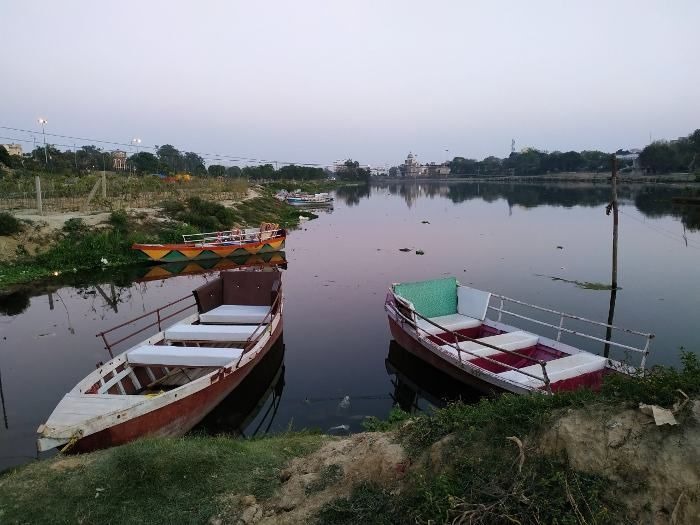Lucknow’s groundwater exploitation is 17 times more than the rate of recharge: TERI
Over 72 per cent of households in Uttar Pradesh’s capital use groundwater. By 2031, the groundwater table in the city is expected to decline. Union Minister Prakash Javadekar has stressed on rooftop rainwater harvesting and dual piping system to save water for domestic use.


A woman in rural Uttar Pradesh filling her bucket with tap water. Photo: Shivani Gupta
Lucknow, the capital of Uttar Pradesh, the most populous state in the country, is overdrawing groundwater nearly 17 times more than the combined recharge from rainfall and the Gomti River.
At this rate, by 2031, the groundwater table in key localities of central Lucknow is projected to further decline by about 20-25 metres from current levels, warned a study published today, June 4, by the Energy and Resources Institute (TERI) — an independent organisation, working for the energy, environment and climate change. It was released on the eve of World Environment Day.
As per the study, 72 per cent of households in Lucknow use groundwater. Almost 90 per cent of multi-storey housing societies and 70 per cent of commercial users, comprising hotels, hospitals, schools, offices and malls, are dependent on groundwater. Moreover, almost all the surveyed societies in central, north and east Lucknow were extracting groundwater through private borewells; 60 per cent of these borewells are more than 200 feet deep.
Also Read: Murder of a river: This is how illegal ‘mining’ of groundwater killed the Gomti river
Speaking at a virtual curtain raiser event of TERI’s annual conference, Union Minister for Environment, Forests and Climate Change Prakash Javadekar said that 50-60 per cent of water in domestic use can be saved.

“Every housing society needs to have a provision for rooftop rainwater harvesting. Water wasted in reverse osmosis (RO) purification units should be used for gardening. The government is setting new criteria for buildings to have a dual piping system, separating drinking water from reused water, which can be used for flushing purposes,” Javadekar said.
One of the key findings of the TERI study is that the use of overflow bells to indicate the filling of water storage tanks is not popular among citizens — hence, more water is wasted.
“Attitude is the main problem in water management, be it of people or government. Water has to be conserved at four levels — surface, subsoil, deep soil and groundwater,” said Ayyappa Masagi, Water Literacy Foundation, during the launch of the report.
Masagi emphasised on both rainwater harvesting and reuse of greywater, particularly neglected in the water conservation discourse.
However, Shresth Tayal, the principal investigator of the study, said rainwater harvesting may not be the main solution in dense cities. Therefore, a more scientific groundwater audit should be conducted there.

As compared to surface water, groundwater is less expensive and is of better quality. However, withdrawal more than its recharge potential has lowered the groundwater level in the country, the report said.
Speaking about the key challenges and solutions in water resource management in India, Javadekar highlighted the need to augment rivers, which are a perennial source of water.
Adding that most major rivers originate in forests, Javadekar said that the government has spent nearly Rs 40,000 crore [Rs 400 billion] through CAMPA mechanism towards conservation of forests.

